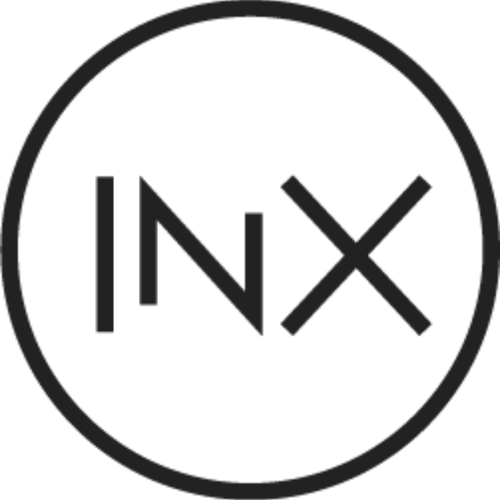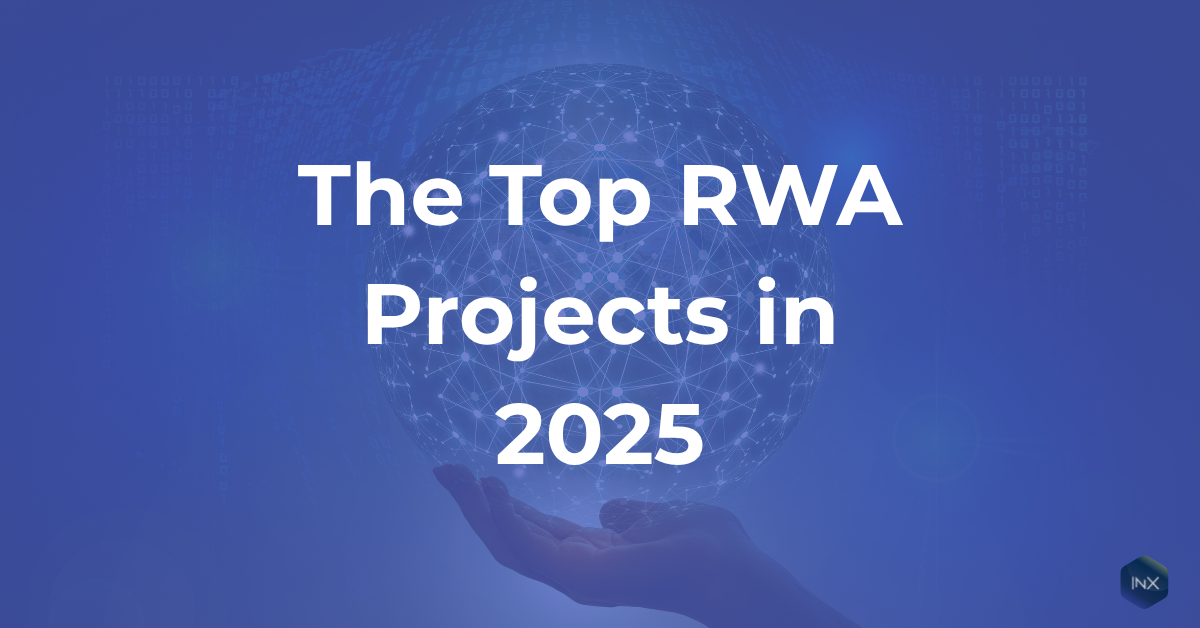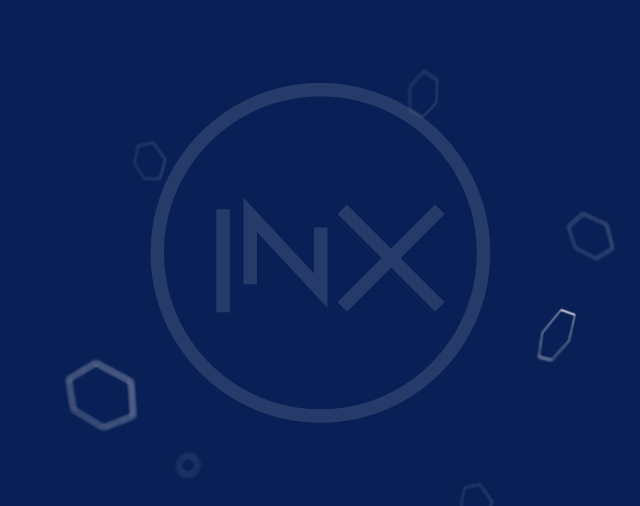Three years ago, suggesting that BlackRock would tokenize Treasury bills or that Nasdaq would file to trade blockchain-based stocks would have gotten you laughed out of any Wall Street conference room. When a market grows 5x in two years, from $7.9 billion to $33 billion, it’s crossed from “interesting experiment” to “the next big thing.”
Driving this growth is a host of exchanges, asset managers, and infrastructure providers building regulated, transparent, and institution-friendly systems. In this article, we’ve mapped out the top RWA projects you should be paying attention to in 2025.
Enter the RWA World: Best Exchanges for RWA
The best way to enter the RWA market is through regulated exchanges and wallet providers that make investing in tokenized assets secure and simple. Here are the top picks for this section,
- INX.one
As an SEC-registered exchange with ATS and broker-dealer license, INX.one allows you to trade tokenized securities, stocks, and other RWA in a compliant environment. The exchange is under full regulatory oversight and gives you a secure way to on/off ramp into the tokenized RWA.
- SDX (SIX Digital Exchange)
SIX Digital Exchange (SDX) is operated by the Swiss stock exchange and is one of the first fully regulated exchanges for the European market. The exchange provides issuance, settlement, and custody of tokenized bonds and equities under Swiss Law.
Stablecoins and Yield-Bearing Stable Assets
Stablecoins are the earliest use of tokenization and RWA, and they form the base liquidity layer for tokenized assets. Yield-bearing stables take it a step further by introducing a yield component to stablecoins. Here are the top projects to watch for in this category
- Tether (USDT)
As of mid-2025, Tether controls roughly 64% of the stablecoin market, with its USDT supply hovering around $175 billion. Tether employs a fiat-backed model that pegs the USDT to USD with mostly fiat reserves. The company focuses on scale, liquidity, and widespread acceptance, supplying the core infrastructure for millions of users who need fiat stability on-chain.
- Circle (USDC)
Circle adopts a more decentralized approach and prioritizes regulatory transparency and auditability. USDC controls about 27% of the stablecoin market (around $70 billion. The company also recently launched Arc, an L1 specific for stablecoin and payments.
- Ethena (USDe and sUSDe)
As the second fastest protocol to reach $100m revenue ever, Ethena is one of the most talked about new stablecoin projects. It is the Fastest on-chain USD to reach $5b supply ever, growing to the 3rd largest USD asset in the space at $6 billion supply in 10 months. The protocol offers USDe, the third largest stablecoin by market cap, and its yield-bearing counterpart (sUSDe), the largest yield-bearing stable by market cap.
- Ondo Finance (USDY)
Ondo Finance’s USDY is backed by short-term U.S. Treasuries and bank deposits and offers stable returns for investors. Its recent launch of the Ondo Global markets for investors outside the U.S, which allow them to invest in the U.S market, is a move fully into RWA.
Tokenized Treasuries and Stocks
- BlackRock
BlackRock’s BUIDL Fund is one of the largest tokenized money markets, managing over $2 billion in AUM within a year. The fund is a perfect example of how global asset managers are leveraging tokenization to modernize access to tradFi
- INX.one
INX.one’s strength mostly lies in its regulated access to U.S treasuries and tokenized stocks. The partnership with BackedFi makes it possible for users to trade tokenized versions of Nasdaq-listed stocks (like tokenized Apple or Nvidia shares), all backed 1:1 by real shares held in custody.
- Backed Finance
Backed Finance focuses on creating tokenized versions of traditional market instruments, equities, ETFs, and indices that are wallet-native. In August 2025, BackedFi launched a major expansion with around 60 tokenized stocks and ETFs on Solana and leading exchanges like Bybit.
- Franklin Templeton
Franklin Templeton expanded into tokenized assets with BENJI Funds and FOBXX which is a tokenized money market and treasury. They also offer legacy infrastructure for some RWA projects to launch tokenized funds on-chain. As of the time of writing, Franklin Templeton’s tokenized U.S. Government Money Market Fund (FOBXX) holds a $594 million market capitalization across Ethereum, Solana, and other chains.
Tokenized Private Markets and Credit
Private markets and credit projects control over 50% of the RWA sector (minus stablecoins). These projects open access for fundraising, venture capital, and alternative markets that were once restricted to institutions and HNWI (High-net-worth individuals). Here are the top picks for RWA projects in this sector.
- Republic
Republic has worked with over 650 portfolio companies and raised over $3 billion in venture funding through the Republic platform. Its revenue-sharing token, Republic Note, has a market cap of over $133 million with around $372 million tokens already in circulation. Its recent acquisition of INX is a move to expand its offerings to millions of users with a secondary market available on INX.
- Centrifuge
Centrifuge is built for tokenized private credit, offering institutions access to high-quality corporate loan collateral for investors. It has crossed over $1 billion in TVL, and its JAAA CLO-rated funds have over $650 million AUM on-chain.
- Credix
Credix focuses on bridging institutional capital and local borrowers, especially in Latin America. Its tokenized pools of credit allow global investors to participate in offering structured lending to borrowers who previously had limited access to international funding. Credix currently holds a TVL of around $10.99 million.
The Infrastructure Layer: Tokenization-as-a-service
The infrastructure layer makes the tokenization process possible; these projects are the biggest names building the data oracles, blockchains, and compliance rails for tokenized assets.
- ChainLink
ChainLink holds the highest market share (at 67%) in Oracle, and it handles most of the critical Oracle infrastructure for RWAs. Its Proof-of-reserve is adopted by many tokenization projects to ensure the full backing and transparent verification of the collateral.
- Fireblock
With its MPC wallet infrastructure, Fireblock offers institutional-grade security for digital assets. Its wallet and settlement network are trusted by over 1,800 financial institutions, including banks, asset managers, and exchanges. Many tokenization projects use Fireblocks for secure asset storage and compliance-grade infrastructure, making it one of the most important infrastructure projects.
- Mavryk Network
Mavryk Network is a purpose-built blockchain for real-world asset tokenization with in-built regulated infrastructure. As of 2025, Mavryk has secured strategic investments (about $10 million) led by MultiBank Group to support the tokenization of over $10 billion in UAE premium real estate via MAG Lifestyle Development.
- Ethereum
Ethereum controls around 58% of the RWA market, hosting around 432 RWA assets (excluding stablecoins) that are worth over $10B. Most tokenized treasuries, bonds, and stablecoins are issued on Ethereum because of its robust security, liquidity, and institutional-grade infrastructure.
- Arbitrum:
As the leading Ethereum L2, Arbitrum hosts over 110 RWA assets, second to the Ethereum mainnet. Arbitrum currently powers the issuance of over $616M worth of tokenized assets (almost half of the Mcap).
- Aave (Horizon Market)
Horizon Market is the new RWA market by Aave that allows institutions to supply tokenized RWA as collateral to borrow stablecoin. It launched in August 2025, and has reached over $197 million in market size and over $53 million borrows.
- Ve-chain
VeChain offers blockchain solutions for supply chain tokenization and real-world asset tracking. The network’s focus on traceability and data integrity make it a strong player in the infrastructure supporting asset verification.
What Next: Where to Start as a Beginner in RWA
The best place to start as a beginner in the RWA market is through a regulated platform that offers a secure path into tokenized assets. Ideally, you want an exchange that makes it easy to move from fiat into crypto and tokenized assets within a compliant environment.
Looking for that perfect place to start? INX.one is an ideal exchange for you. The platform provides direct access to tokenized Treasuries, equities, private market offerings, and other cryptocurrencies under SEC oversight. You get self-custody control, meaning you can maintain full control over your private keys and assets.
Frequently Asked Questions (FAQs)
1. What makes 2025 a turning point for Real-World Assets (RWA)?
2025 marks the first year where major traditional financial institutions like BlackRock, Franklin Templeton, and Nasdaq have gone beyond pilots and into production-level tokenization. With over $33 billion in tokenized assets and new regulations paving the way for compliant issuance, the RWA market has officially moved from experimentation to mainstream finance.
2. How do tokenized RWAs differ from regular crypto assets?
Unlike cryptocurrencies, which are often speculative or utility-based, RWAs are backed by real-world financial instruments like U.S. Treasuries, equities, and private credit. Each token represents ownership or claim to a tangible, yield-bearing asset, making them more stable and regulated than most crypto tokens.
3. Which sectors are benefiting the most from tokenization today?
The biggest growth areas are Treasuries, stablecoins, and private credit markets. Tokenized Treasuries now dominate institutional portfolios, while stablecoins provide the liquidity foundation for on-chain settlements. Meanwhile, tokenized credit platforms like Centrifuge and Credix are expanding investor access to private debt markets that were once off-limits to retail investors.
4. Why does regulation matter so much in RWA tokenization?
Because RWAs represent real securities, regulatory oversight ensures that investors actually own verified, compliant assets. Platforms like INX.one and SDX operate under SEC and FINMA regulations respectively, giving both institutional and retail participants confidence that every transaction is legally enforceable and fully transparent.
5. How can individual investors get started in the RWA space?
The safest entry point is through regulated exchanges that provide both crypto and security token access in one place. INX.one, for example, allows verified users to buy tokenized U.S. Treasuries, equities, and alternative investments directly, with full compliance and self-custody options — bridging traditional finance and blockchain with institutional-grade protection.



